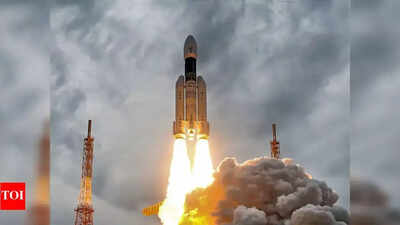Space exploration is on the cusp of a revolutionary period, with a series of ambitious missions scheduled to launch in 2025 and beyond. These endeavors, spearheaded by space agencies like NASA, ISRO, ESA, and JAXA, as well as private sector pioneers, promise to expand our knowledge of the Moon, Mars, and the vast expanse beyond. From crewed lunar missions to robotic probes venturing to distant moons, here are ten of the most exciting space missions to watch in the coming years.

The IM-3 mission, a vital component of NASA’s Commercial Lunar Payload Services (CLPS) program, aims to establish a sustainable human presence on the Moon. The mission will deploy advanced instruments to analyze the lunar surface, including rovers designed to navigate and investigate the terrain. Furthermore, IM-3 will assess novel landing technologies and autonomous systems critical for upcoming crewed Artemis missions. Successful execution will bolster confidence in commercial partnerships that support lunar exploration efforts.
ESCAPADE comprises two small satellites, "Blue" and "Gold," which will orbit Mars at varying altitudes. This setup will allow for a comprehensive understanding of how solar winds strip away the Martian atmosphere. Understanding this phenomenon is crucial to determining why Mars transformed from a potentially habitable planet into the cold, arid world observed today. Data collected from the mission will refine planetary atmosphere models and aid in assessing Mars' past habitability.
NISAR represents a significant collaboration between NASA and ISRO. Equipped with dual-frequency radar, it can penetrate cloud cover and darkness to generate detailed maps of Earth's surface. The mission will monitor land deformation resulting from earthquakes and volcanic activity, track deforestation rates, and measure ice sheet dynamics. The timely data provided will enhance disaster response efforts and deepen our understanding of the impacts of climate change, serving as an invaluable resource for scientists and policymakers globally.
Artemis II signifies NASA's return to crewed lunar missions after a long hiatus. Four astronauts will orbit the Moon aboard the Orion spacecraft, propelled by the powerful Space Launch System (SLS). This ten-day mission will evaluate life support, navigation, and communication systems in the deep space environment, ensuring readiness for the subsequent Artemis III landing mission. Artemis II is a pivotal step toward establishing a sustained human presence on the Moon.
Gaganyaan-2 is an integral part of India's ambitious human spaceflight program. These uncrewed test flights will thoroughly assess the spacecraft's critical systems, including environmental controls and emergency procedures. These tests are vital for ensuring astronaut safety during the planned Gaganyaan-3 mission. Success will position India among the elite nations capable of independently sending humans into space, marking a significant achievement in its space capabilities.
Dragonfly is a unique rotorcraft lander designed to traverse the diverse terrain of Titan. With its dense atmosphere and abundance of organic molecules, Titan presents a compelling environment for studying prebiotic chemistry and the potential for life beyond Earth. Dragonfly will analyze surface composition, weather patterns, and chemical processes, offering unprecedented insights into how life's building blocks might form in environments drastically different from our own.
JAXA's MMX mission seeks to unravel the mystery surrounding the origins of Mars' moons by collecting samples from Phobos. The mission will also conduct detailed observations of Deimos. Determining whether these moons are captured asteroids or formed from Mars itself will provide valuable insights into the history of the Martian system and the early solar system. The sample return is a complex endeavor that will provide invaluable material for laboratory analysis on Earth.
ESA's Space Rider is a reusable, autonomous spaceplane designed to carry payloads for scientific and technological experiments in microgravity. It will facilitate longer-duration studies on biological processes, materials science, and plant growth, helping researchers understand the effects of space conditions on various systems. Its reusability reduces costs and enhances access to space for European researchers and industries.
SPHEREx will map the entire sky in infrared light, providing a wealth of data about the universe's structure and history. It will investigate the origins of galaxies, measure the fingerprints of cosmic inflation, and explore the enigmatic dark energy that drives the universe's accelerated expansion. This mission promises to revolutionize our understanding of the cosmos with unprecedented precision.
VERITAS will generate high-resolution maps of Venus' surface using radar to penetrate its dense cloud cover. By studying the planet's tectonic activity and volcanic processes, the mission aims to explain why Venus evolved so differently from Earth, despite their similar size and composition. VERITAS will also assess Venus' potential for past habitability and provide context for comparative planetology.
These missions represent the cutting edge of space exploration, integrating human spaceflight, robotic explorers, and Earth observation to broaden our understanding of the solar system and our own planet. As they launch and unfold over the coming decade, they are poised to inspire new discoveries and redefine humanity's place in the cosmos.
Newer articles
Older articles
 Vijay Officially Named TVK's Chief Minister Hopeful for Tamil Nadu's 2026 Election
Vijay Officially Named TVK's Chief Minister Hopeful for Tamil Nadu's 2026 Election
 RJ Mahvash Prioritizes Work Over Buzz, Addresses Link-Up Speculation
RJ Mahvash Prioritizes Work Over Buzz, Addresses Link-Up Speculation
 JPG to PDF: A Comprehensive Guide for Graphic Designers & Professionals
JPG to PDF: A Comprehensive Guide for Graphic Designers & Professionals
 UNESCO's World Heritage Wonders: Unveiling 10 Iconic Sites, From Petra to the Pyramids
UNESCO's World Heritage Wonders: Unveiling 10 Iconic Sites, From Petra to the Pyramids
 iQoo Z9 Turbo: Rumored Specs Emerge – Snapdragon 8s Gen 3, 6000mAh Battery Highlighted
iQoo Z9 Turbo: Rumored Specs Emerge – Snapdragon 8s Gen 3, 6000mAh Battery Highlighted
 Shadman Islam Defends Bangladesh Batters After Day 1 Struggles Against Sri Lanka
Shadman Islam Defends Bangladesh Batters After Day 1 Struggles Against Sri Lanka
 England's Bold Claim: Could They Have Chased Down 450 Against India?
England's Bold Claim: Could They Have Chased Down 450 Against India?
 5 Often-Missed Warning Signs of Bladder Cancer You Need to Know
5 Often-Missed Warning Signs of Bladder Cancer You Need to Know
 KL Rahul Puts Country First, Prioritizes England Tests Over Newborn Child
KL Rahul Puts Country First, Prioritizes England Tests Over Newborn Child
 Tick Bite Paralyzes Fitness Influencer: A Wake-Up Call for Outdoor Enthusiasts
Tick Bite Paralyzes Fitness Influencer: A Wake-Up Call for Outdoor Enthusiasts